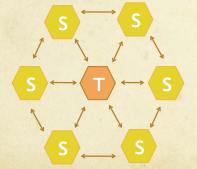Excerpt from my Blended Learning Book. Chapter 12: English
Teaching English has been my passion for nine years, but it also presents a variety of challenges. The grading load became overwhelming as my total student load of freshman and sophomores climbed from my contractual 157 to a daunting 173 to begin the 2010-2011 school year. I had to find a way to effectively teach a growing number students without eliminating important writing assignments or sacrificing all of my personal time grading stacks of homework.

I had to find a way to change the flow of information in my classroom. Traditionally, I assigned reading, annotations and a written homework assignment each night. That meant I was collecting a stake of approximately 115-125 homework assignments every other day (number is based on a 75% submission rate and takes into account my rotating A-day/B-day schedule). All information and assignments were funneled through me for feedback and a grade.
When I introduced my online discussions, I was able to redefine the “normal” flow of ideas and information. Students became valuable resources capable of supporting each other and providing quality feedback to each other’s ideas, questions and writing. Of course, this required work at the start of the year establishing expected behaviors and norms, but by October my students had begun to recognize each other as respected contributors to our classroom dialogue.
I began posting two meaty questions online for discussion about the nightly reading, instead of creating and copying reading comprehension or analysis sheets for each student each day. These online reading comprehension and analysis questions inspired thoughtful discussions about the literature we were reading. I was amazed by the variety of perspectives and interpretations, the thoughtful questions asked, and the connections made to other pieces of literature we had read. In the past the handouts I assigned and collected were often carbon copies of one another. Either students were meeting in hoards to copy each other’s ideas or the traditional handout inspired very little creativity or depth of response. In contrast, when working online, students were forced to build on ideas already presented and develop the analysis further to continue the conversation. They fed off of each other’s ideas and questions taking the discussion to a deeper level. It was truly shocking to compare their writing on handouts with the interactions they had online in our discussions.
The following are examples of the types of questions I posted to replace the traditional homework…
Chapter discusses several approaches to designing questions and assignments that complement English classes.




No responses yet